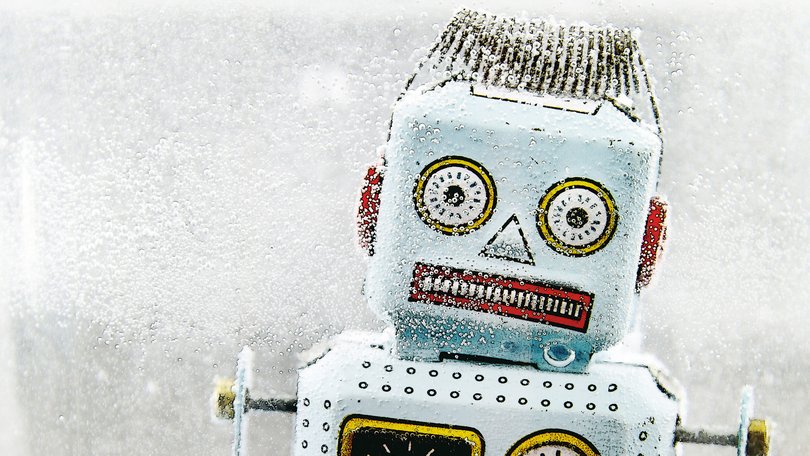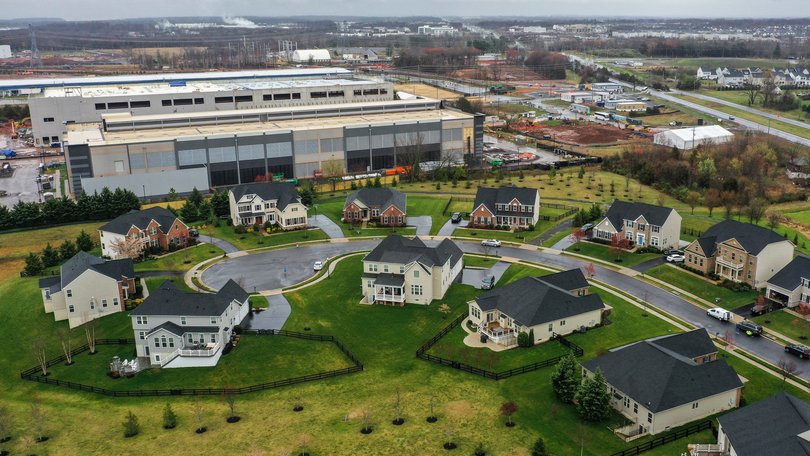ECONOMIST: What if the AI investment boom faces a chill that shocks markets and derails trillion dollar bets

It already ranks among the biggest investment booms in modern history. This year America’s large tech firms will spend nearly $US400billion ($600b) on the infrastructure needed to run artificial intelligence models. OpenAI and Anthropic, the world’s leading model-makers, are raising billions every few months; their combined valuation is approaching half a trillion dollars. Analysts reckon that by the end of 2028 the sums spent worldwide on data centres will exceed $US3 trillion. ($4.5t)
The scale of these bets is so vast that it is worth asking what will happen at payback time. Even if the technology succeeds, plenty of people will lose their shirts. And if it doesn’t, the economic and financial pain will be swift and severe.
Investors always flock to promising technologies, but the AI rush is more extreme than many past booms. Boosters say that artificial general intelligence (AGI) — models that are better than the average human at most cognitive tasks — could be only a few years away.
Sign up to The Nightly's newsletters.
Get the first look at the digital newspaper, curated daily stories and breaking headlines delivered to your inbox.
By continuing you agree to our Terms and Privacy Policy.The first firm to achieve it could reap unimaginable returns. Investors and innovators know they may not be backing the right model. But if they spend slowly and cautiously, they may as well not bother to spend at all.
Consequently, a relentless investment race is under way, with big tech firms splurging on the computing power needed to build the biggest models. A growing cast of extra players, from property developers to electricity generators, has been drawn in.

Oracle is the latest to join the party. Its value surged on September 10 after it published an ambitious forecast for its AI-related cloud business, briefly turning its boss, Larry Ellison, into the world’s richest man.
No matter what happens, many investors will lose money. In the rosiest scenario AGI will arrive and usher in a new world of economic growth of perhaps 20 per cent a year, as we wrote in July. Some shareholders would enjoy astronomical returns; many others would face big losses.
More mundane scenarios should also be considered, however. The technology may evolve in ways that investors do not expect. When alternating current eventually prevailed in America in the 19th century, for instance, direct-current electricity firms were overshadowed and forced to consolidate.
Today investors reckon that the probable AI winners are those that can run the biggest models. But, as we report this week, early adopters are turning to smaller language models, which could suggest that less computing capacity may be needed after all.
Or the road to widespread adoption could be slower and bumpier than investors expect, giving today’s AI laggards a fighting chance. Niggles in the technology, the difficulty of quickly supplying electric power, or managerial inertia could mean that take-up is more gradual than first hoped. As they revise down their expectations for AI revenues, many investors and creditors could become less willing to countenance huge investments. The flow of capital could slow; some startups, struggling under the weight of losses, could fold altogether.

What would such an AI chill be like? For a start, a lot of today’s spending could prove worthless.
After its 19th-century railway mania, Britain was left with track, tunnels and bridges; much of this serves passengers today. Bits and bytes still whizz through the fibre-optic networks built in the dotcom years. The AI boom may leave a less enduring legacy. Although the shells of data centres and new power capacity could find other uses, more than half the capex splurge has been on servers and specialised chips that become obsolete in a few years.
The good news is that today’s financial system could probably absorb the blow. Some technological busts have been brutal; after Britain’s railway bubble burst in the 1860s banks were left with big losses, leading to a credit crunch. So far, however, much of the investment in data centres has been bankrolled from the deep well of big-tech profits.
Although firms including Meta are turning to debt to help fund their latest investments, their lucrative businesses and robust balance-sheets mean they are well positioned to finance a technological boom. Among the keenest to provide that credit are private-market funds, which are typically funded by rich individuals and institutions rather than ordinary depositors. AI startups tend to be financed by well-capitalised venture and sovereign-wealth funds that could withstand losses.
However, trouble spots could still emerge. The more the investment boom spreads, the more financing structures could get riskier, and the more indebted firms could be drawn in. Power companies are desperate to increase their investments to supply AI with the electricity it needs; a heavily indebted utility could easily become overextended.
America’s economy, too, would suffer a nasty shock. By one estimate, the AI boom has contributed 40 per cent of its GDP growth over the past year — a staggering figure for a sector that accounts for just a few per cent of total output. If investment projects are scaled back, or ditched altogether, that will translate into economic pain as fewer data centres are built, and fewer workers are employed to build them.
Fear the burn
To make matters worse, falls in the stockmarket could cause asset owners to cut back on their spending. Because the valuations of AI-related companies have rocketed, portfolios today are dominated by a handful of tech firms. And households are more exposed to stocks than they were in 2000; if prices fall, their confidence and spending could take a knock.
The poorest would be spared, because they tend to hold few stocks. But it is the rich who have fuelled consumption in America over the past year. Robbed of its sources of strength, the economy would weaken as tariffs and high interest rates take a toll.
The bigger the boom gets, the bigger the knock-on consequences of an AI chill could be. If the technology ends up fulfilling the extravagant promises that have been made for it, a new chapter of history will open. However, the story of its frenzied pursuit will make the textbooks, too.
Originally published as What if the $3trn AI investment boom goes wrong?
